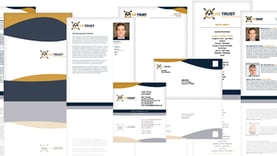Every client has different goals and resources as they prepare for retirement. There are five important details to consider when working with clients. These are not the only necessary details required for helping clients plan for retirement, but they should not be overlooked.

Successful Plans Require Thorough Analysis
A one-size fits all approach like the "Rule of 100" doesnt work. I don’t think you can do what is necessary to act in your prospect or clients’ best interest unless you are considering all of the necessary data, and a myriad of factors that impact the outcome. I do not believe that I am capable of acting in a prudent manner with loyalty to my clients unless I take into account details about their financial lives like the following:
1. Retirement Resources
Retirement resources includes both retirement income sources and retirement assets. Retirement income includes Social Security, pension, or any other lifetime sources of income. Strategies that can gain the most income the client is entitled to should be examined and considered. Retirement assets on the other hand include accounts like employer sponsored defined contribution plans like 401(k)s, individual retirement arrangements (IRAs), non qualified brokerage accounts, and other personal savings. These accounts should be balanced to supplement retirement income and compliment the retirement income sources.
2. Varying Rates of Return and Interest Earned
Every single retirement asset dollar has a specific purpose and time to be spent. Interest rates earned and rates of return on retirement assets will vary widely depending on the savings and investment vehicles used. Dollars allocated to highly liquid and relatively safe savings vehicles like a money market account earn lower rates of interest. High-risk, high potential investments offer more opportunity for accumulation, but carry risk of loss. Each retirement asset plays a significant role in determining the overall portfolio rate of return. Applying a blanket portfolio rate of return across all asset classes for simplification purposes is irresponsible, and may lead to underestimating or overestimating portfolio returns.
3. Current and Future Tax Liability
Taxation of income sources and the impact of supplemental consumption from various types of retirement assets will impact the overall efficiency of a plan. Depending on the tax status of each retirement resource, how and when your client uses the resources will impact whether they pay more taxes than what is required by law. If you’re not a licensed tax professional, I strongly recommended working with one. Understanding how and when to harvest specific resources is a critical component of a comprehensive retirement income plan.
4. Cost of Living Adjustments
The cost-of-living and maintaining a lifestyle is impacted by current and future expected expenses. Potential unexpected expenses should be planned for as well. The impact of inflationary pressure on those expenses should not be ignored.
For demonstration purposes, let's look at a specific slice of a retirement income budget, the cost of home ownership. If a client owns a home and has a mortgage, expected expenses might include mortgage principal and interest (P&I), property taxes, and insurance. Let's assume the mortgage principal and interest, taxes, and insurance total $2,000 per month or $24,000 per year. Adjusting for 3% inflation my client would need $4,000 or $48,000 worth of income to maintain that standard of living 25 years from now.
However, mortgage P&I doesn’t inflate, it is constant. It also drops off when your client makes the final mortgage payment. On the other hand, taxes and insurance do inflate, and they don’t go away when your client makes their last payment on their mortgage. Some expenses are inflated, and some are not. Some expenses will go away, and some expenses will not. Some expenses might occur at a future date and need to be planned for even though the client is not experiencing them today.
5. Isolating Potential Cracks
Identifying retirement risks is critical to planning as well. With all of the data gathered and organized, you can shine a spotlight on cracks in a client's current plan. Some of those cracks you may be able to help them eliminate, and some of those cracks may be able to be mitigated. Other potential future cracks, like changes to the tax code, we have no control over and we must manage around them as best we can.
Moving Forward After Analysis
Keep in mind these are not the only details you need to consider and that you will likely need additional information to build successful plans. Without getting a clear picture of everything and how it all works together I couldn't possibly act in a prudent manner in the best interest of my prospect or client. Once the heavy lifting is complete, and recommended actions are ready to be implemented, you can go in search of the most cost effective strategy that provides the most economic benefit for the client. However, any product recommendation prior to gathering all of the required information would be premature and considered financial malpractice in my opinion.
A well crafted plan implements many strategies working in harmony to create the best possible outcome for your client. Your closing rate will increase when you provide a holistic and comprehensive plan. You will implement multiple strategies per client, resulting in additional sales, which results in additional revenue for your firm. You will also earn repeat business, and introductions to more referrals.
Improve your success and increase your IUL sales with the six strategies we highlight in our free ebook. Get your copy and start growing your business today!






